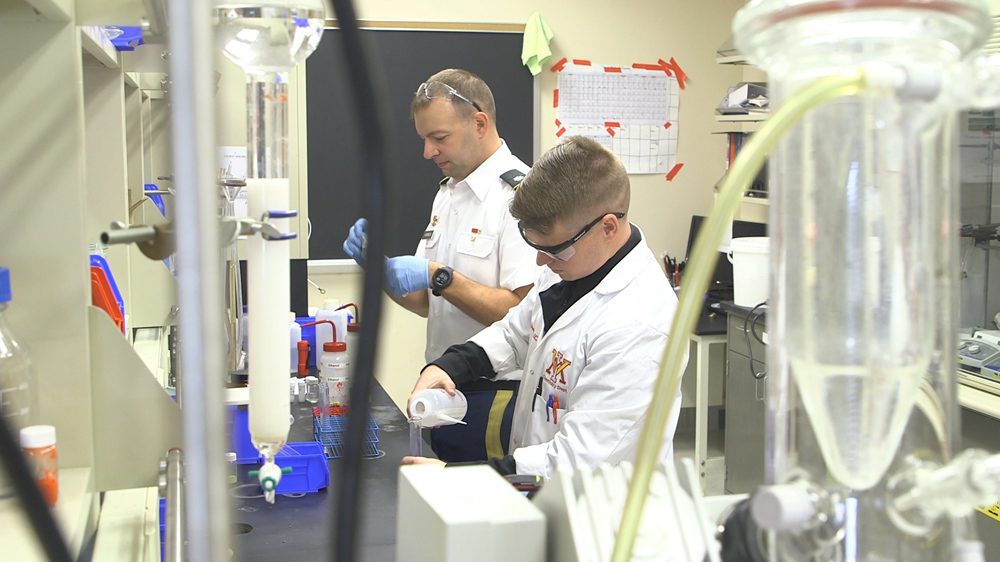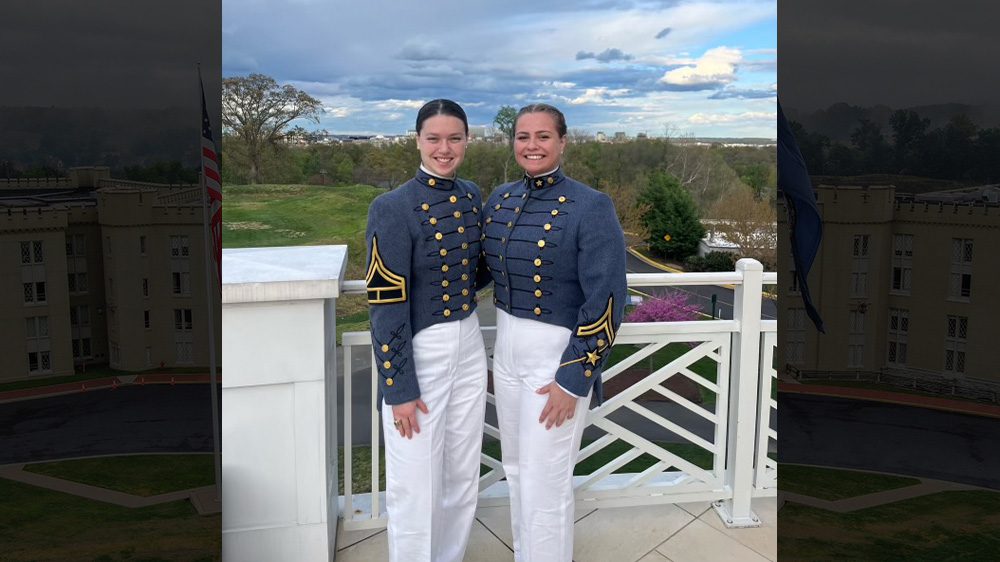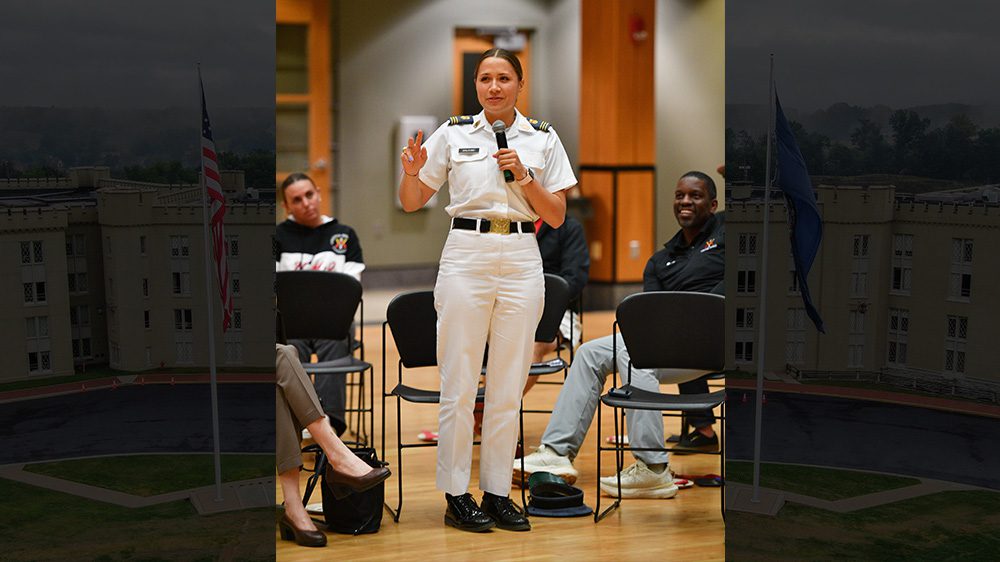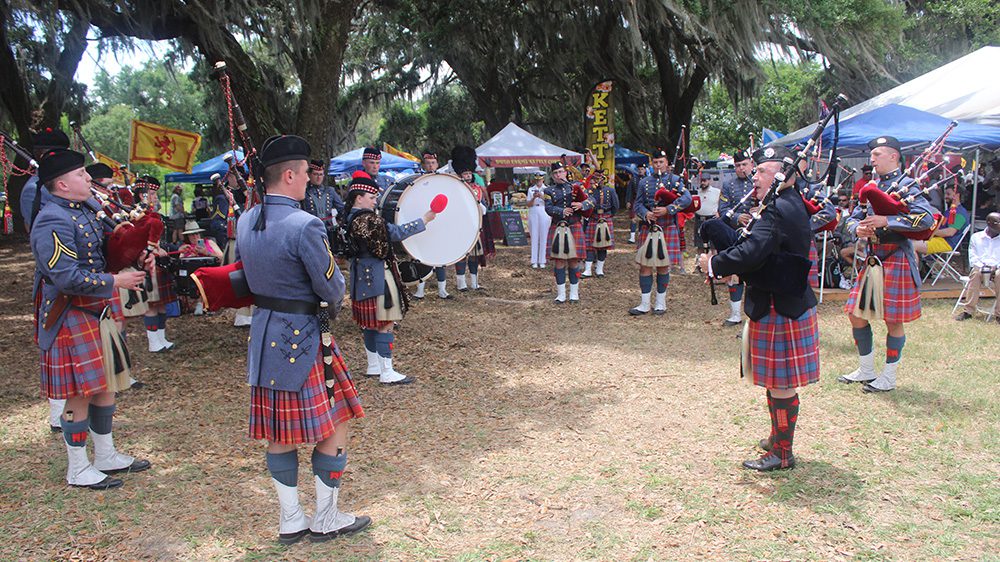Imagine an energy independent United States. What if the U.S. could make fuel from a waste product? The impact of changing trash to treasure – or waste to a viable fuel source – is hard to overstate. National security, national economy and the environment would see the effects.
Cadet John Dickenson ’20, chemistry major, is conducting research with that lofty goal. For the past four years, he’s been trying to turn carbon dioxide, the trash, into fuel – the treasure. It’s possible to change carbon dioxide, he explained, but the process uses a lot of energy.
“We make more carbon dioxide in the process than we consume,” explained Lt. Col. Dan Harrison ’05, Ph.D., who is Dickenson’s adviser and a cheerful advocate for the field of chemistry. “[If] you’re pumping two or three or four or 10 times more carbon dioxide out … it’s very wasteful. You can do it, but it’s not economically feasible.”
The research is looking at two specific chemicals: Formaldehyde and methanol. These two chemicals are “used in practically every industry you can imagine,” Harrison said. Methanol is a fuel source, and formaldehyde is the building block of almost every man-made material. Looking around his office, from the bookshelves to a computer to furniture, Harrison couldn’t find anything that a chemist hadn’t touched – and most of it involved formaldehyde.
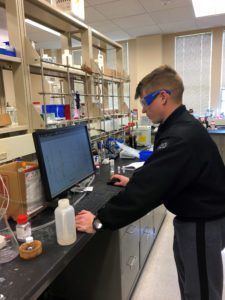
Cadet John Dickenson ’20 has spent his cadetship researching an efficient way to turn carbon dioxide into a usable substance, like fuel. Much of the equipment Dickenson uses, including a quarter million-dollar nuclear magnetic resonance spectrometer, is possible through the Jackson-Hope Fund.
In his research, Dickenson is focusing on metal centered complexes. Picture a three-dimensional sphere, surrounded by other spheres. Together, these spheres make a molecule. The sphere in the center is the metal – in this case, cobalt. The surrounding shapes are other atoms like carbon, nitrogen and oxygen. The way these atoms are connected to cobalt determines how the cobalt behaves. Dickenson has made dozens of combinations of these molecules. Every time he makes a new molecule, he gains a tiny sliver of knowledge about how much energy must flow into it to start the process of converting carbon dioxide.
The process is like climbing a tree, Dickenson said. He doesn’t have to start climbing from the bottom of the trunk, but he often needs to reverse course when he comes to the end of a branch – and then find a new branch to explore. Helping him in his research are several machines, including something that looks like a cross between a smooth, shiny trash can and Star Wars’ R2D2 droid: A nuclear magnetic resonance spectrometer.
The quarter million-dollar machine brings Dickenson’s research to a new level, allowing him to see specific structural details of his samples. The NMR also puts VMI chemistry degrees at a higher level, allowing the Institute to grant American Chemical Society-certified degrees.
Dickenson’s research is complicated and is also – like much research – full of failure. Harrison would, he said, much rather let cadets make their mistakes at VMI. Here, he works with them and helps them learn from their mistakes. Then, he’s able to send well-prepared graduates to their real-world jobs.
“The value of failure is you gain experience. Having experience and having context and knowing how to solve problems is what makes really strong leaders in our world,” Harrison said. Failure also teaches perseverance, and Dickenson has continued pushing forward through hundreds of reactions – and 90% of them have failed. Through these failures, Dickenson and Harrison now understand “very subtle changes in the electronic structure of compounds.” These “little clues” Dickenson uncovered through his years of undergraduate research built a foundation for the next 20 years of research, Harrison said.
Extending far beyond the tan walls of VMI’s academic buildings, undergraduate research not only solidly prepares cadets for their futures but builds something more intangible – the relationship between a professor and a cadet. Working closely with cadets daily builds lifelong connections, Harrison said. He keeps in touch with many former students and has attended many of their weddings. One of Harrison’s own mentors, Col. Steve Riethmiller ’63, still teaches in the department and was at Harrison’s wedding.
Undergraduate research at VMI is largely possible through the Jackson-Hope fund, which was established in the late 1990s to promote academic excellence at VMI. Research like Dickenson’s would “absolutely not be possible without the backing of the Jackson Hope board,” Harrison said. The Jackson Hope fund has helped pay for lab equipment, chemicals, faculty professional development and cadets’ conference attendance.
“My personal success with scholarly engagement success and contribution to science would not be possible without Jackson Hope,” Harrison said. “Basically, we’d be living in a subpar environment that I can’t even imagine working in.”
Following his graduation in May, Dickenson will attend graduate school to pursue a doctorate degree in chemistry. He’s been accepted to Northwestern University – one of the country’s top schools for chemistry, Harrison pointed out. He’s also been accepted to the University of North Carolina at Chapel Hill – and is waiting to hear from three other schools.
“I want to end up either in a government lab or a corporate lab, doing … cutting-edge research,” Dickenson said. “I don’t want to go mess around in a dusty corner of science that no one’s going to look at for the next 40 years.”
-

Molly Rolon Editorial Specialist

Christian Heilman Senior Director of Digital Strategy
The senior director of digital strategy is responsible for creating original video and multimedia materials, as well as developing and editing web and digital content. The senior director is responsible for platform coordination and troubleshooting, to include the VMI Alumni Agencies’ primary websites, digital newsletter and other digital platforms.

